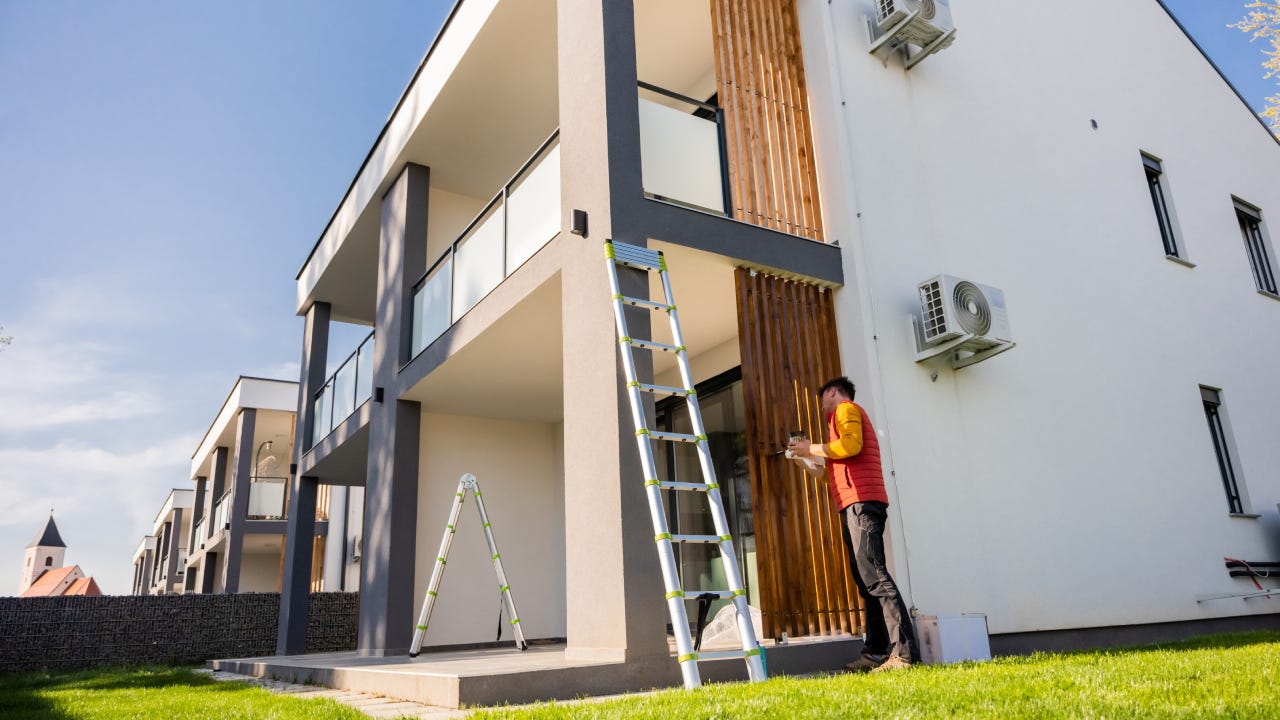Can you get a HELOC on an investment property?

The Bankrate promise
At Bankrate we strive to help you make smarter financial decisions. While we adhere to strict , this post may contain references to products from our partners. Here's an explanation for .
A home equity line of credit (HELOC) on an investment property is a loan taken out against a piece of real estate that you use to earn income or a financial return. So, as opposed to borrowing against property where you actually reside, a HELOC on an investment property leverages a place where you do not live as collateral to borrow money.
While many borrowers have gotten interested in HELOCs over the past two years, tapping the ownership stake in their homes, HELOCs on investment properties aren’t nearly as common — or as easy to get. The vast majority of HELOCs are taken out against primary residences; lenders are more comfortable with a loan against the actual roof over your head because they know you’ll prioritize repaying that loan.
However, some lenders do offer HELOCs on investment properties. Here’s how they work, and how to decide if they’re a good strategy for your financing needs.
How do you get a HELOC on an investment property?
First, let’s define our terms. An investment property is real estate that is bought and held for the purpose of producing a financial return, as opposed to occupation by the owner. Investment properties can be commercial, industrial or residential. Common examples of investment properties held by individuals (who aren’t full-time real estate professionals) include: vacation houses, condos, duplexes, small apartment buildings and accessory dwelling units (ADUs).
Getting a HELOC is similar to getting a mortgage (in fact, HELOCs are a type of second mortgage). And opening a HELOC on an investment property is not that different from opening a HELOC on your home. In both cases, you’re putting up the property as collateral for your debt.
Here’s how the process works.
1. Know your finances.
Before you apply for a home equity line of credit, you’re going to want to estimate how much equity you have. Property values have continued rising this year – albeit more slowly than they had been during the peak of the pandemic – so you’ll want to get a sense of what your property is worth versus how much, if any, you have left to pay on the first mortgage (if any). The difference between how much you owe and the investment property’s fair market value equals, roughly, the amount of your equity stake. In ascertaining the value, you might want to consult a real estate professional who specializes in similar properties to issue a broker price opinion on yours.
2. Shop around to find the best deal.
Shopping around for a HELOC on an investment property is going to be more limited than for the regular, residence-based variety: While the numbers are growing, there simply aren’t as many lenders that offer these lines of credit. Still, there are always choices, and it’s always important to compare. Try to find at least three lenders, and try to suss out how practiced they are in this sort of HELOC. Look at the APR that each lender offers, and be sure to scrutinize the fine print to understand whether there are additional fees such as a penalty for closing the line of credit early.
3. Apply.
When you’re ready to officially apply for a HELOC, be prepared for the kind of complete under-the-hood type of financial scrutiny you would receive with any type of request to borrow a sizable chunk of money. A lender will look at your credit score, your debt load, your cash flow, your cash reserves and every other detail about your finances to determine a) whether they will loan you the cash and b) how much they’ll charge you to borrow it. The lender will also probably do an appraisal of your property, which sets the official value on it. In determining its worth, they’ll look at its condition and also the amount and sort of income it generates.
4. Close.
Closing on a HELOC is typically a much faster process than closing on a traditional mortgage. Some lenders will close in as little as three days, and you can access the cash within a week.
What are the pros and cons of getting a HELOC on an investment property?
Pros
- Cheaper than many other forms of borrowing: The interest rates on HELOCs are often lower compared to other forms of financing like credit cards and personal loans. (You’ll likely pay a bit more because the loan’s tied to an investment property, however — more on that below.) A HELOC might also be simpler and cheaper to obtain than a business or commercial property loan.
- Less risk for you: Taking out a HELOC on an investment property might feel a bit safer than a HELOC on your primary residence. If you default on the line of credit, at least the home you live in won’t be subject to foreclosure.
- A flexible way to access cash: You can continually tap the HELOC during the initial draw period, so it’s often a good fit for fluctuating or longer-term expenses like renovation projects.
- Cheap initial payments: With most HELOCs, you only need to pay interest during the draw period. Paying back the principal starts during the repayment period.
Cons
- Limited availability: Not many lenders offer HELOCs on investment properties.
- Higher rates: An investment property is inherently riskier than a primary residence: You don’t live in it, which means you aren’t as impacted if you lose it. That means that lenders charge higher rates for any type of financing attached to one, including a HELOC. For example, as of mid-June,TD Bank’s lowest available APR on HELOCs for investment properties is nearly 2 percentage points higher than a HELOC on a primary or secondary home.
- Extra fees: Most HELOCs come with an annual fee and an early cancellation or termination fee if you close the line within the first two or three years.
- Negative equity concerns: Real estate doesn’t always appreciate, and if your property loses value, you could wind up underwater (owing more on a property than it’s worth).
HELOC requirements: investment properties vs. primary residences
The criteria for investment property HELOCs tend to be more stringent. In addition to the borrower’s creditworthiness, lenders might also look at the property’s financials.
Investment properties |
Primary residences |
|
|---|---|---|
| Credit score minimum | Generally 700 | 650-680 |
| Debt-to-income (DTI) maximum | 43% (can depend on anticipated rental income) | 43% to 50% |
| Loan-to-value (LTV) maximum | 80% | 85% |
When is it a good idea to use a HELOC on an investment property?
Using a HELOC on an investment property can be an easy way to access cash that will generate a return. For example, you might use the funds from the HELOC to buy another property that can act as an additional investment, without depleting your savings. Or you might use the funds to upgrade or expand your property, making it more attractive to prospective tenants and enhancing its revenue stream. HELOCs are an especially good idea when you want to use the funds on the real estate itself — because there are tax benefits (see below).
Are you able to deduct a HELOC on your taxes?
Tax advantages are one of the pluses of HELOCs. You might be able to deduct the interest paid on a HELOC, including a HELOC on an investment property, so long as the funds were used to build, improve or repair the real estate backing the loan in some way. Remodeling the premises, upgrading the HVAC system, constructing a new wing, or even buying an adjacent lot could all count as tax-deductible improvements.
You can’t deduct all of the interest, however. You can only deduct the interest actually accrued on withdrawn funds (not on your total line of credit). Depending on your filing status, overall you can deduct up to $750,000 (if single or married filing jointly) or $375,000 (married filing separately) of interest on combined debt, including any mortgages on your primary residence. You must also itemize deductions on your tax return.
Can you use a HELOC for a down payment on an investment property?
HELOC funds can be used for pretty much anything. This includes down payments on other properties. Using a HELOC from a current investment property to purchase a second property could be a smart way to leverage your assets, increasing your income while not impeding your cash flow.
Just remember, that you will need to generate enough income from your property to make your monthly payments. It’s also a good idea to read the fine print from your lender to make sure there are no restrictions on how you use your HELOC: Some lenders prohibit drawing funds for investments, real estate or otherwise.
What are the alternatives to using a HELOC on an investment property?
- Cash-out refinance: With a cash-out refinance, you’ll refinance the loan on your investment property to a higher amount — provided you have enough equity — and take the difference in cash. Some savvy real estate investors use this method to continuously add new properties to their portfolio mix. However, this strategy might not work as well today, with mortgage interest rates having gone up.
- HELOC on your home: If you can’t find a lender willing to extend a line of credit on your investment property, you might want to consider taking out a HELOC on your primary residence. This means your home is on the line, however, if you can’t repay what you borrow. You might not be able to get as sizable a loan, and if you use the funds on the investment property you won’t be able to deduct any interest (the tax break only works if the money is spent on the collateralized property).
- Personal loan: Depending on your debt load, you might be able to take out an unsecured personal loan as a lump sum. The interest rates on these can be much higher if your credit isn’t the best, however, and you’ll need to start repaying what you borrowed right away.
- Small business loan: If you have set up a company to own/operate your investment property, consider small business loans or lines of credit to access the funds you need. The interest rates on these loans will likely be higher than that of a personal HELOC, and you’ll have to start full repayments right away or make more frequent payments (in the case of the line of credit). But if you have a solid business plan you can show to a lender that documents your strategy for expanding your real estate investment portfolio, this can be another viable option.
The bottom line on using a HELOC on an investment property
Opening a HELOC on an investment property can be a savvy financial move, particularly if your need for funds is real estate–related. You can leverage the property to improve the property — and its income-generating or appreciation potential. Plus, you may be able to score some tax benefits.
However, a HELOC on an investment property isn’t all upside: Rates are higher than some other types of financing — including residential-property HELOCs — and you need to have pretty solid financials. Also, the availability is limited to a small number of lenders.
Additional reporting by Emma Woodward
Related Articles




Can you get a home equity loan on investment or rental property?